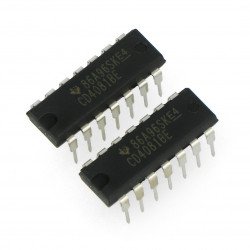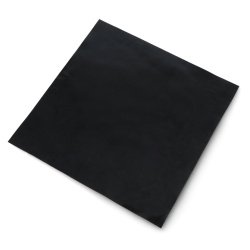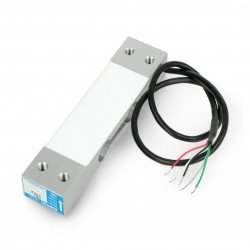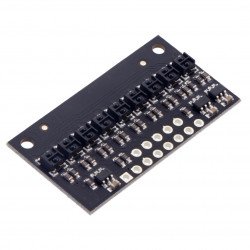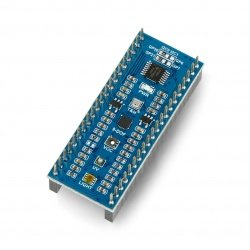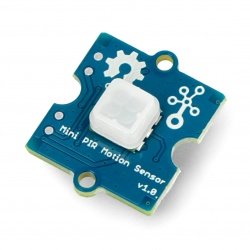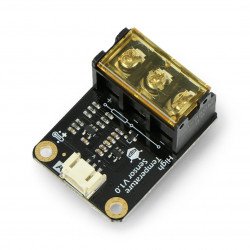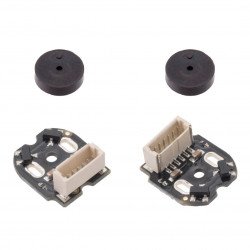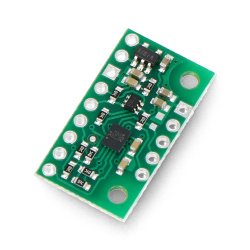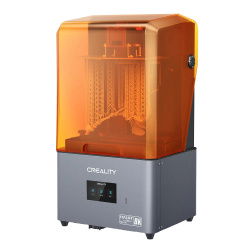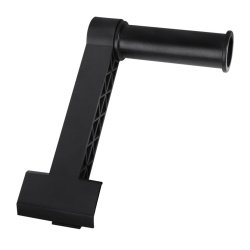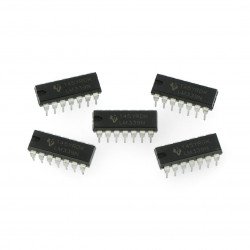The comparator In electronics, a comparator is a device which compares two voltage (less current) and returns a digital signal indicating which one is bigger. Elements of this type are often used in electronics, for example, to check if the input signal has a certain value. If input, the signal from the sensor a value of the comparator can act as a control system element. When you connect to one of the inputs of the comparator the signal from termoopornika, and the other reference voltage to obtain a simple thermostat. It is sufficient that the output plug control relay heater.
Komparatory - Układy kombinacyjne
Analog Comparator LM339 - THT - 5pcs
Power supply 36 Volt or +/-18 V. DIP14 Case. Set of 5 pcs.Low-Power LM393P dual-channel comparator - THT DIP8 - 5pcs
Comparator LM393 with supply voltage from 2 V to 36 V. The response time is 300 ns. 5 units are included.Single channel comparator LM311P
LM311P comparator with supply voltage from 3,5 to 30 V. The propagation time is equal to 115 ns.See also
Comparator – one of the basic components of analog systems
The comparator circuit compares two input voltages , giving the output a high state (supply voltage) or a low state (ground voltage), or a negative supply voltage in the case of a symmetrically powered element. In most cases, the comparator is implemented using a dedicated integrated circuit . It amplifies the difference between the input voltages. The system gain is very high, so even with the slightest difference the output will be saturated. If the voltage at the non-inverting input is higher, the output will be high, and if the voltage at the inverting input is higher, the output will be low.
Feedback loop and hysteresis in the comparator
Due to the high gain in the comparator circuit, this element is extremely susceptible to noise and interference at the input of the system . When the difference between the input signals is less than the peak-to-peak voltage of the noise present in the input signal, it can cause the output signal to oscillate - rapidly changing from high to low and back again. In practice, this is very problematic. Therefore, to improve such a circuit and make it more resistant to noise, a feedback loop is added to provide the system with operating hysteresis.
Comparator - A wide range of applications
Comparators have a wide range of applications in electronic systems. In addition to using them in control and control systems , for example to stabilize physical parameters such as temperature, engine speed or lighting intensity, they are used in power supply systems , class D amplifiers (the comparator is the simplest system used for PWM modulation), analog converter element -digital or even as a generator after adding an RC circuit to it . Thanks to the use of a feedback loop with a comparator, such a system can operate stably, while being extremely resistant to noise and interference in the input signals.
Comparators - FAQ
A comparator is a type of circuit that is designed to compare two numbers or two voltage states.
Comparators are used in a variety of electronic devices, such as power systems, lighting controllers, thermostats and many other applications.
The analog comparator is used to compare two voltage states. The output is given a value depending on which input signal is larger.
Comparators include analog (comparing two voltage values) and digital (comparing two binary numbers). They can also be divided according to the method of installation: comparators are used for surface mounting (SMD) and through-hole mounting (THT).


















































































































